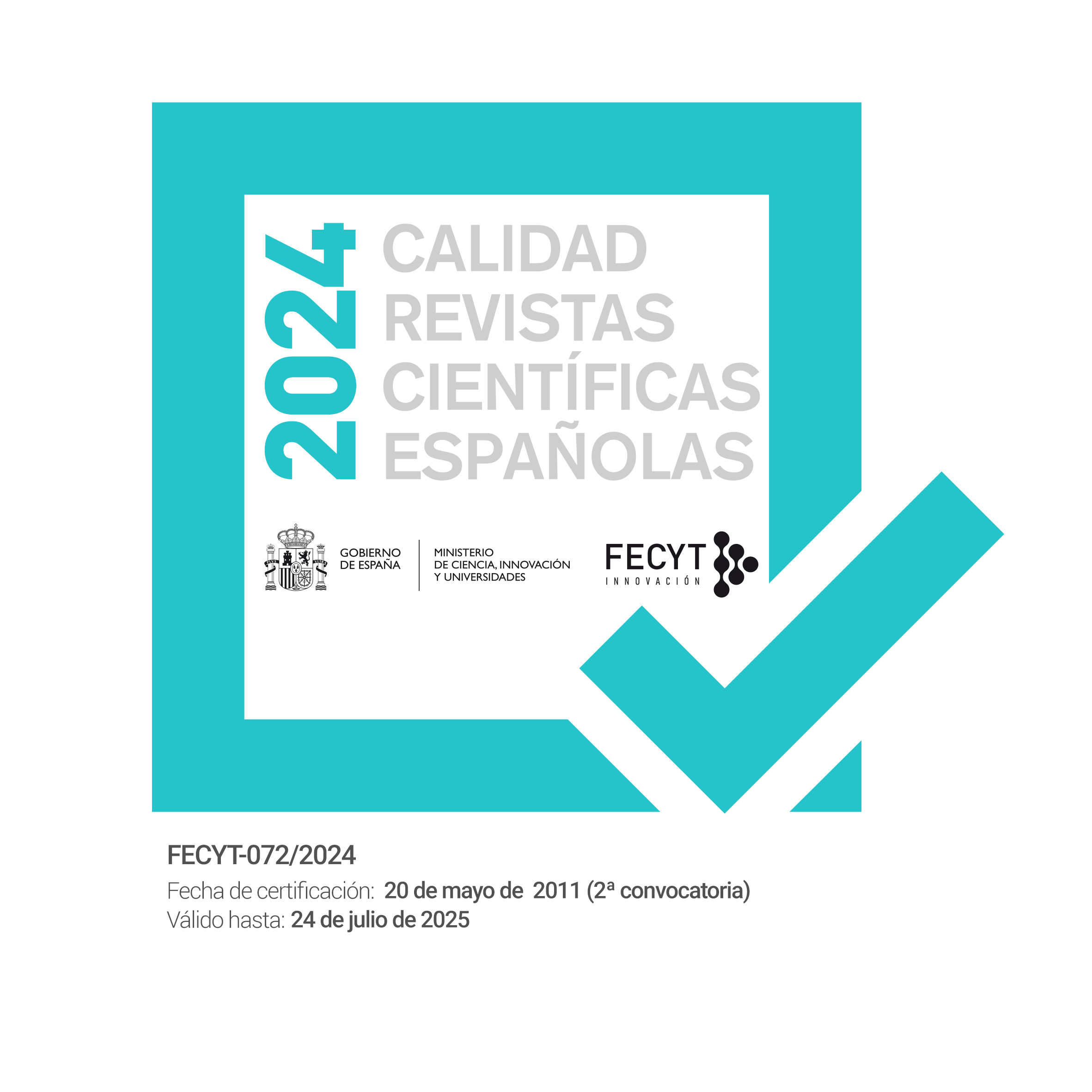Selección de planta hospedadora en Plebejus argus (Linnaeus, 1758) y de su hormiga mutualista. El papel de la arquitectura de la planta (Lepidoptera: Lycaenidae)
DOI:
https://doi.org/10.57065/shilap.635Palabras clave:
Lepidoptera, Lycaenidae, arquitectura de plantas, selección de hábitat, Plebejus argus, Lasius niger, manejo, mutualismo, puesta de huevosResumen
En el Parque Nacional de Doñana las larvas de Plebejus argus (Linnaeus, 1758) se alimentan en Halimium halimifolium L. Willk. y mantienen una relación mutualista con la hormiga Lasius niger (Linnaeus, 1758), que anida en la base de estos matorrales. La arquitectura de esta planta ha sido analizada tratando de evaluar si hay caracteres visuales y estructurales seleccionados tanto por las hormigas asociadas como por las mariposas para la puesta de huevos que permitan un rápido reconocimiento de los que tienen mayor probabilidad de ocupación. También analizamos si el comportamiento de selección de hormigas coincide en zonas de alta y baja densidad de sus hormigueros. Los resultados muestran que las hormigas eligen las plantas más grandes y más aisladas, tanto en las zonas de alta y baja densidad de hormigueros. La selección de la mariposa para la puesta de huevos coincide parcialmente con la de la hormiga, aunque el aislamiento de la planta no tiene ningún significado para las mariposas. Es posible así identificar plantas con cargas de huevos antes de los tratamientos de aclarado de matorral, para tratar de mitigar los efectos colaterales que esta medida de gestión tiene sobre estas dos especies.
Descargas
Estadísticas globales ℹ️
|
184
Visualizaciones
|
118
Descargas
|
|
302
Total
|
|
Citas
AGOSTA, S. J., 2006.– On ecological fitting, plant-insect associations, herbivore host shifts, and host plant selection.– Oikos, 114(3): 556-565. DOI: https://doi.org/10.1111/j.2006.0030-1299.15025.x
ALBANO-ARAÚJO, A. A., D’ARC DE PAULA, J., ALVES-CARNEIRO, M. A. & SCHOEREDER, J. H., 2006.– Effects of host plant architecture on colonization by galling insects.– Austral Ecology, 31: 343-348. DOI: https://doi.org/10.1111/j.1442-9993.2006.01563.x
ÁLVAREZ, M., RUIZ, E., LÓPEZ-MUNGUIRA, M., MARTÍNEZ, M. D., & HERNÁNDEZ, J. M., 2005.– La emisión de sonido en hormigas y mariposas: ¿un sistema de comunicación entre especies?- Actas de la XVI Bienal de la Real Sociedad Española de Historia Natural: 39-41.
ANTHES, N., FARTMANN, T., HERMANN, G. & KAULE, G., 2003.– Combining larval habitat quality and metapopulation structure - the key for successful management of pre-alpine Euphydryas aurinia colonies.– Journal of Insect Conservation, 7: 175-185. DOI: https://doi.org/10.1023/A:1027330422958
AWMACK, C. S. & LEATHER, S. R., 2002.– Host plant quality and fecundity in herbivorous insects.– Annual Review of Entomology, 47: 817-844. DOI: https://doi.org/10.1146/annurev.ento.47.091201.145300
BARROS-BELLANDA, C. H. & ZUCOLOTO, F. S., 2005.– Egg cannibalism in Ascia monuste in the field; opportunistic, preferential and very frequent.– Journal of Ethology, 23: 133-138 (doi 10.1007/s10164-004-0138-y). DOI: https://doi.org/10.1007/s10164-004-0138-y
BECKERS, R., DENEUBOURG, J. L. & GOSS, S., 1992.– Trail laying behaviour during food recruitment in the ant Lasius niger (L.).– Insectes Sociaux, 39: 59-72. DOI: https://doi.org/10.1007/BF01240531
BERGSTRÖM, A., 2005.– Oviposition site preferences of the threatened butterfly Parnassius mnemosyne - implications for conservation.– Journal of Insect Conservation, 9: 21-27. DOI: https://doi.org/10.1007/s10841-004-3204-4
BEYER, L. J. & SCHULTZ, C. B., 2010.– Oviposition selection by a rare grass skipper Polites mardon in montane habitats: Advancing ecological understanding to develop conservation strategies.– Biological Conservation, 143(4): 862-872. DOI: https://doi.org/10.1016/j.biocon.2009.12.031
BOOMSMA, J. J. & DE VRIES, A., 1980.– Ant species distribution in a sandy coastal plain.– Ecological Entomology, 5: 189-204. DOI: https://doi.org/10.1111/j.1365-2311.1980.tb01142.x
BOOMSMA, J. J. & VAN LOON, A. J., 1982.– Structure and diversity of ant communities in successive coastal dune valleys.– Journal of Animal Ecology, 51: 957-974. DOI: https://doi.org/10.2307/4016
BOOMSMA, J. J. VAN DER LEE, G. A. & VAN DER HAVE, T. M., 1982.– On the production ecology of Lasius niger (Hymenoptera: Formicidae) in successive coastal dune valleys.– Journal of Animal Ecology, 51: 975-991. DOI: https://doi.org/10.2307/4017
BRISTOW, C. M., 1991.– Why are so few aphids ant-tended? - In C. R. HUXLEY & D. F. CUTLER (eds). Ant-Plant Interactions: 104-119. Oxford University Press, Oxford. DOI: https://doi.org/10.1093/oso/9780198546399.003.0009
BROWER, D. M. & STAMP, N. S., 1987.– Patterns of oviposition in Hemileuca lucina (Saturniidae).– Journal of the Lepidopterists’ Society, 41: 131-140.
CAMARGO, R. S., FORTI, L. C., DE MATOS, C. A. O. LOPES, J. F. & DE ANDRADE, A. P. P., 2003.– Physical resistance as a criterion in the selection of foraging material by Acromyrmex subterraneus brunneus Forel, 1911(Hym. Formicidae).– Journal of Applied Entomology, 128(5): 329-331. DOI: https://doi.org/10.1111/j.1439-0418.2004.00844.x
CERDÁ, X. & RETANA, J., 2000.– Alternative strategies by thermophilic ants to cope with extreme heat: individual versus colony level traits.– Oikos, 89: 155-163. DOI: https://doi.org/10.1034/j.1600-0706.2000.890117.x
CLARK, L. G. & DENNEHY, T. J., 1988.– Oviposition behaviour of grape berry moth.– Entomologica Experimentalis et Applicata, 47: 223-230. DOI: https://doi.org/10.1111/j.1570-7458.1988.tb01140.x
COURTNEY, S. P. & COURTNEY, S., 1982.– The edge effect in butterfly oviposition: causality in Anthocharis cardamines and related species.– Ecological Entomology, 7: 131-137. DOI: https://doi.org/10.1111/j.1365-2311.1982.tb00651.x
COURTNEY, S. P., 1984.– The Evolution of egg clustering by butterflies and other insects.– American Naturalist, 123(2): 276-281. DOI: https://doi.org/10.1086/284202
DENNIS, R. R., 1983.– Pattern and response in egglaying of the orange tip butterfly Anthocharis cardamines (L.) (Pieridae).– Vasculum, 98: 27-43.
DENNIS, R. R., 1985.– The edge effect in butterfly oviposition, host plant condition, edge effect breakdown and opportunism.– Entomologist’s Gazette, 36: 285-291.
DEPICKÉRE, S., FRESNEAU, D., & DENEUBOURG, J. L., 2008.– Effect of social and environmental factors on ant aggregation: A general response? - Journal of Insect Physiology, 54: 1349-1355. DOI: https://doi.org/10.1016/j.jinsphys.2008.07.013
DOAK, P., KAREIVA, P. & KINGSOLVER, J., 2006.– Fitness consequences of choosy oviposition for a timelimited butterfly.– Ecology, 87: 395-408. DOI: https://doi.org/10.1890/05-0647
DOBLAS-MIRANDA, E. & REYES-LÓPEZ, J., 2008.– Foraging strategy quick response to temperature of Messor barbarus (Hymenoptera: Formicidae) in Mediterranean environments.– Environmental Entomology, 37(4): 857-61. DOI: https://doi.org/10.1093/ee/37.4.857
EICHEL, S. & FARTMANN, T., 2008.– Management of calcareous grasslands for Nickerl’s fritillary (Melitaea aurelia) has to consider habitat requirements of the immature stages, isolation and patch area.– Journal of Insect Conservation, 12: 677-688. DOI: https://doi.org/10.1007/s10841-007-9110-9
FARTMANN, T. & TIMMERMANN, K., 2006.– Where to find the eggs and how to manage the breeding sites of the Brown Hairstreak (Thecla betulae (Linnaeus, 1758) in Central Europe? - Nota lepidopterologica, 29(1/2): 117-126.
FERNÁNDEZ-HAEGER, J., GARCÍA-GARCÍA, I. & AMAT, J. A., 1976.– Guía de las Mariposas de Doñana.– Naturalia Hispanica, 6: 1-55.
FOURCASSIÉ, V., SCHMITT, T., & DETRAIN, C., 2012.– Impact of interference competition on exploration and food exploitation in the ant Lasius niger.– Psyche, 2012: doi:10.1155/2012/383757. DOI: https://doi.org/10.1155/2012/383757
GARCÍA-NOVO, F., MERINO, J., RAMÍREZ-DIAZ, L., RODENAS, M., SANCHO, F., TORRES, A., GONZÁLEZ-BERNÁLDEZ, F., DÍAZ-PINEDA, F., ALLIER, C., BRESSET, V. & LACOSTE, A., 1977.– Doñana. Prospección e inventario de ecosistemas.– Monografías ICONA, 18: 244 pp. Ministerio de Agricultura, Madrid.
GONÇALVES-ALVIM, S. J. & FERNANDES, G. W., 2001.– Biodiversity of galling insects: historical, community and habitat effects in four Neotropical savannas.– Biodiversity Conservation, 10: 70-98. DOI: https://doi.org/10.1023/A:1016602213305
GUTIÉRREZ, D., FERNÁNDEZ, P., SEYMOUR, A. & JORDANO, D., 2005.– Habitat distribution models: are mutualist distributions good predictors of their associates? - Ecological Applications, 15(1): 3-18. DOI: https://doi.org/10.1890/03-5344
HOLEC, M., FROUZ, J. & POKOMY, R., 2006.– The influence of different vegetation patches on the spatial distribution of nests and the epigeic activity of ants (Lasius niger) on a spoil dump after brown coal mining (Czech Republic).– European Journal of Soil Biology, 42(3): 158-165. DOI: https://doi.org/10.1016/j.ejsobi.2005.12.005
JANSEN, S. H. D. R., HOLMGREN, M., VAN LANGEVELDE, F. & WYNHOFF, I., 2012.– Resource use of specialist butterflies in agricultural landscapes: conservation lessons from the butterfly Phengaris (Maculinea) nausithous.– Journal of Insect Conservation, 16: 921-930 (doi 10.1007/s10841-012-9479-y). DOI: https://doi.org/10.1007/s10841-012-9479-y
JOHST, K., DRECHSLER, M., THOMAS, J. & SETTELE, J., 2006.– Influence of mowing on the persistence of two endangered large blue butterfly species.– Journal of Applied Ecology, 43: 333-342. DOI: https://doi.org/10.1111/j.1365-2664.2006.01125.x
JORDANO, D., RODRÍGUEZ, J., THOMAS, C. D. & FERNÁNDEZ-HAEGER, J., 1992.– The distribution and density of a lycaenid butterfly in relation to Lasius ants.– Oecologia, 91: 439-446. DOI: https://doi.org/10.1007/BF00317635
LIU, W., WANG, Y. & XU, R., 2006.– Habitat utilization by ovipositing females and larvae of the Marsh fritillary (Euphydryas aurinia) in a mosaic of meadows and croplands.– Journal of Insect Conservation, 10: 351-360 (doi 10.1007/s10841-006-9009-x). DOI: https://doi.org/10.1007/s10841-006-9009-x
LÖRTSCHER, M., ERHARDT, A. & ZETTEL, J., 1995.– Microdistribution of butterflies in a mosaic-like habitat: the role of nectar sources.– Ecography, 18: 15-26. DOI: https://doi.org/10.1111/j.1600-0587.1995.tb00115.x
MAILLEUX, A. C., DENEUBOURG, J. L. & DETRAIN, C., 2003.– How does colony growth influence communication in ants? - Insectes Sociaux, 50: 24-31. DOI: https://doi.org/10.1007/s000400300004
MARTIN-STRAUSZ, M., FIEDLER, K., FRANZE´N, M. & WIEMERS, M., 2012.– Habitat and host plant use of the Large Copper Butterfly Lycaena dispar in an urban environment.– Journal of Insect Conservation, 16: 709-721. DOI: https://doi.org/10.1007/s10841-012-9456-5
MORENO, S. & VILLAFUERTE, R., 1995.– Traditional management of scrubland for the conservation of rabbits Oryctolagus cuniculus and their predators in Doñana National Park. Spain.– Biological Conservation, 73: 81-85. DOI: https://doi.org/10.1016/0006-3207(95)90069-1
OBREGÓN, R., DE HARO, S., JORDANO, D. & FERNÁNDEZ-HAEGER, J., 2012.– Lampides boeticus (Lepidoptera: Lycaenidae) preys on cocoons of its own specific parasitoid Cotesia specularis (Hymenoptera: Braconidae).– Journal of Insect Behavior, 25: 514-517 (doi 10.1007/s10905-012-9318-8). DOI: https://doi.org/10.1007/s10905-012-9318-8
PATRICELLI, D., BARBERO, F., LA MORGIA, V., CASACCI, L. P., WITEK, M., BALLETTO, E. & BONELLI, S., 2011.– To lay or not to lay: oviposition of Maculinea arion in relation to Myrmica ant presence and host plant phenology.– Animal Behaviour, 82: 791-799. DOI: https://doi.org/10.1016/j.anbehav.2011.07.011
PIERCE, N. E. & EASTEL, S., 1986.– The selective advantage of attendant ants for the larvae of a lycaenid butterfly, Glaucopsyche lygdamus.– Journal of Animal Ecology, 55: 451-462. DOI: https://doi.org/10.2307/4730
PIERCE, N. E. & ELGAR, M. A., 1985.– The influence of ants on host plant selection by Jalmenus evagoras, a myrmecophilous lycaenid butterfly.– Behavioral Ecology and Sociobiology, 16: 209-222. DOI: https://doi.org/10.1007/BF00310983
PIERCE, N. E., BRABY, M. F., HEATH, A., LOHMAN, D. J., MATHEW, J. RAND, D. B. & TRAVASSOS, M. A., 2002.– The ecology and evolution of ant association in the Lycaenidae (Lepidoptera).– Annual Review of Entomology, 47: 733-71. DOI: https://doi.org/10.1146/annurev.ento.47.091201.145257
PRADEL, K. & FISCHER, K., 2011.– Living on the edge: Habitat and host-plant selection in the butterfly Lycaena tityrus (Lepidoptera: Lycaenidae) close to its northern range limit.– Journal of Research on the Lepidoptera, 44: 35-41. DOI: https://doi.org/10.5962/p.266493
RABASA, S. G., GUTIÉRREZ, D. & ESCUDERO, A., 2004.– Egg laying by a butterfly on a fragmented host plant: a multi-level approach.– Ecography, 28: 629-639. DOI: https://doi.org/10.1111/j.2005.0906-7590.04229.x
REID, A. M. & HOCHULI, D. F., 2007.– Grassland invertebrate assemblages in managed landscapes: Effect of host plant and microhabitat architecture.– Austral Ecology, 32: 708-718. DOI: https://doi.org/10.1111/j.1442-9993.2007.01767.x
REUDLER-TALSMA, J. H., BIERE, A., HARVEY, J. A. & VAN NOUHUYS, S., 2008.– Oviposition cues for a specialist butterfly-plant chemistry and size.– Journal of Chemical Ecology, 34: 1202-1212. DOI: https://doi.org/10.1007/s10886-008-9519-y
RIIHIMÄKI, J., VEHVILÄINEN, H., KAITANIEMI, P. & KORICHEVA, J., 2006.– Host tree architecture mediates the effect of predators on herbivore survival.– Ecological Entomology, 31(3): 227-235. DOI: https://doi.org/10.1111/j.1365-2311.2006.00784.x
RODRÍGUEZ, J., FERNÁNDEZ-HAEGER, J. & JORDANO, D., 1991.– El ciclo biológico de Plebejus argus (Linnaeus, 1758) en el Parque Nacional de Doñana (SW de España).– SHILAP Revista de lepidopterología, 19(76): 241-252.
RUDGERS, J. & WHITNEY, K. D., 2006.– Interactions between insect herbivores and a plant architectural dimorphism.– Journal of Ecology, 94: 1249-1260. DOI: https://doi.org/10.1111/j.1365-2745.2006.01161.x
SAKATA, H. & HASHIMOTO, Y., 2000.– Should aphids attract or repel ants? Effect of rival aphids and extrafloral nectaries on ant-aphid interactions.– Population Ecology, 42: 171-178. DOI: https://doi.org/10.1007/PL00011996
SCHOONHOVEN, L. M., BEERLING, E. A. M., BRAAKSMAN, R. & VAN VUGT, Y., 1990.– Does the imported cabbageworm Pieris rapae use an oviposition deterring pheromone? - Journal of Chemical Ecology, 16(5): 1649-1655. DOI: https://doi.org/10.1007/BF01014097
SHANSHAN, Z., YILI, J., JIANJUN, T. & XIN, C., 2009.– The invasive plant Solidago canadensis L. suppresses local soil pathogens through allelopathy.– Applied Soil Ecology, 41: 215-222. DOI: https://doi.org/10.1016/j.apsoil.2008.11.002
SOKAL, R. R. & ROHLF, F. J., 1984.– Introducción a la bioestadística: 362 pp. Editorial Reverté, Barcelona.
SUWARNO, CHE SALMAH, M. R., ALI, A. & HASSAN, A. A., 2010.– Oviposition preference of swallowtail butterfly, Papilio polytes (Lepidoptera: Papilionidae) on four Rutaceae (Sapindales) host plant species.– Insect Science, 17: 369-378. DOI: https://doi.org/10.1111/j.1744-7917.2010.01330.x
THOMAS, J. A. SIMCOX, D. J., CLARKE, R. T., 2009.– Successful conservation of a threatened Maculinea butterfly.– Science, 325: 80-83. DOI: https://doi.org/10.1126/science.1175726
THOMPSON, J. N. & PELLMYR, O., 1991.– Evolution of oviposition behavior and host preference in Lepidoptera.– Annual Review of Entomology, 36: 65-89. DOI: https://doi.org/10.1146/annurev.en.36.010191.000433
WAGNER, D. & KURINA, L., 1997.– The influence of ants and water availability on oviposition behaviour and survivorship of a facultatively ant-tended herbivore.– Ecological Entomology, 22: 352-360. DOI: https://doi.org/10.1046/j.1365-2311.1997.00077.x
WYNHOFF, I., GRUTTERS, M. & VAN LANGEVELDE, F., 2008.– Looking for the ants: selection of oviposition sites by two myrmecophilous butterfly species.– Animal Biology, 58: 371-388. DOI: https://doi.org/10.1163/157075608X383683
Publicado
Cómo citar
Número
Sección
Licencia
Derechos de autor 2016 P. Fernández, D. Gutiérrez, J. Fernández-Haeger, D. Jordano

Esta obra está bajo una licencia internacional Creative Commons Atribución 4.0.
El autor retiene sus derechos de marca y patente sobre cualquier proceso o procedimiento dentro del artículo.
El autor retiene el derecho de compartir, distribuir, ejecutar y comunicar públicamente el artículo publicado en SHILAP Revista de lepidopterología, con reconocimiento inicial de su publicación en SHILAP Revista de lepidopterología.
El autor retiene el derecho para hacer una posterior publicación de su trabajo, de utilizar el artículo a publicarlo en un libro, siempre que indique su publicación inicial en SHILAP Revista de lepidopterología.
Cada envío a SHILAP Revista de lepidopterología debe ir acompañado de una aceptación de los derechos de autor y del reconocimiento de autoría. Al aceptarlos, los autores conservan los derechos de autor de su trabajo y aceptan que el artículo, si es aceptado para su publicación por SHILAP Revista de lepidopterología, tendrá una licencia de uso y distribución “Reconocimiento 4.0 Internacional de Creative Commons” (CC BY 4.0), que permite a terceros compartir y adaptar el contenido para cualquier propósito dando el crédito apropiado al trabajo original.
Puede consultar desde aquí la versión informativa y el texto legal de la licencia. La indicación de la licencia CC BY 4.0 debe indicarse expresamente de esta manera cuando sea necesario.
A partir de 2022, el contenido de la versión impresa y digital se encuentra bajo una licencia de uso y distribución “Reconocimiento 4.0 Internacional de Creative Commons” (CC BY 4.0), que permite a terceros compartir y adaptar el contenido para cualquier propósito dando el crédito apropiado al trabajo original.
El contenido anterior de la revista se publicó bajo una licencia tradicional de derechos de autor; sin embargo, el archivo está disponible para acceso gratuito.
Al usar el contenido de SHILAP Revista de lepidopterología publicado antes del año 2022, incluidas figuras, tablas o cualquier otro material en formato impreso o electrónico pertenecen a los autores de los artículos, los autores deben obtener el permiso del titular de los derechos de autor. Las responsabilidades legales, financieras y penales a este respecto pertenecen al autor(es).
En aplicación del Principio de Prioridad del Código Internacional de Nomenclatura Zoologica, no se autoriza el depósito en repositorios, páginas web personales o similares de cualquier otra versión distinta a la publicada por el editor.




























